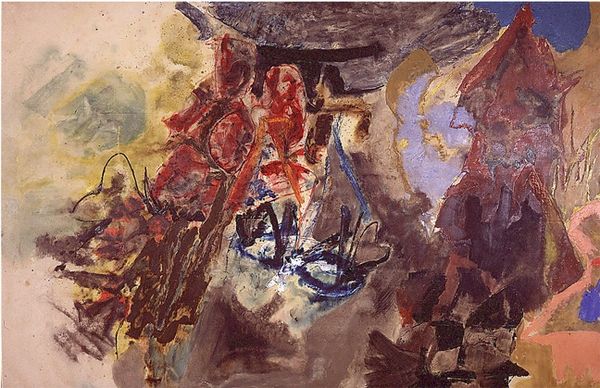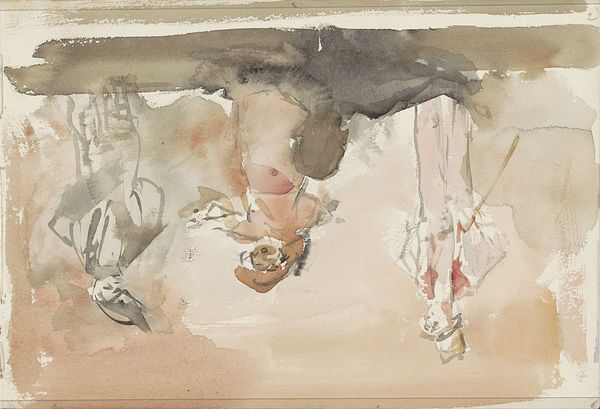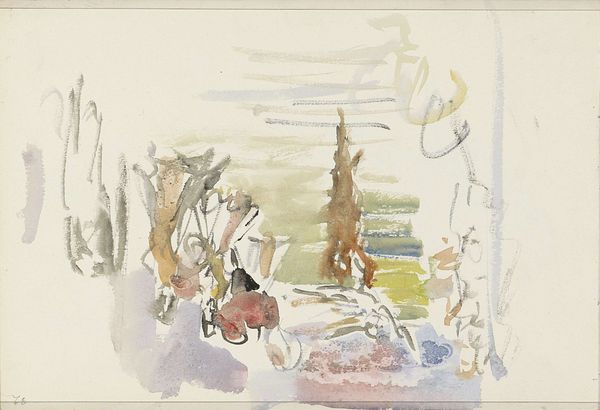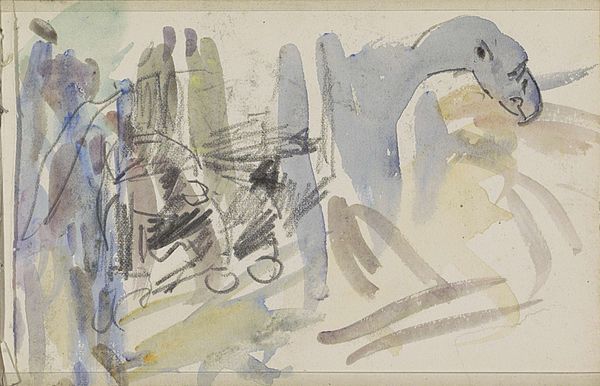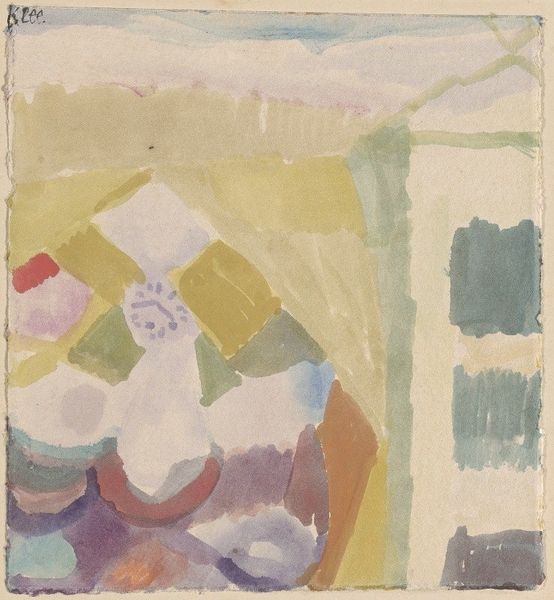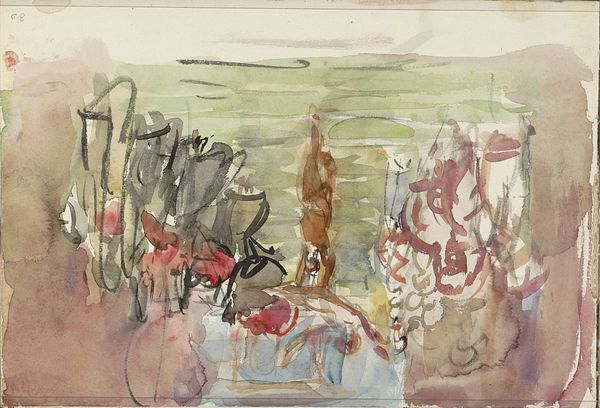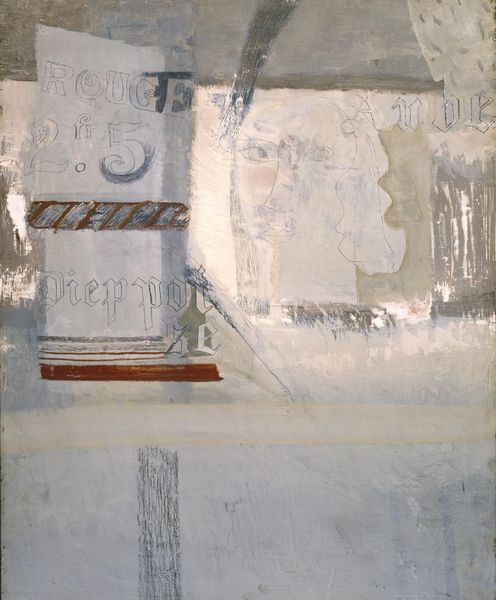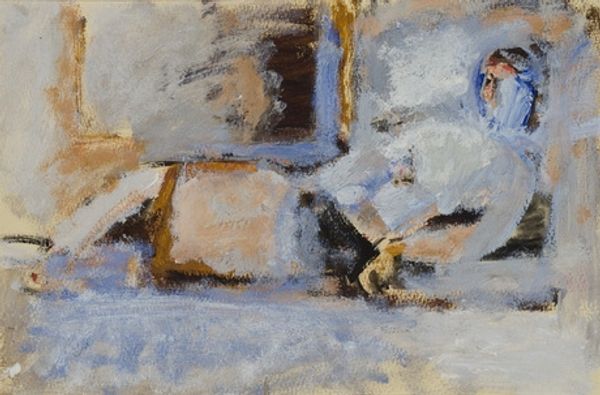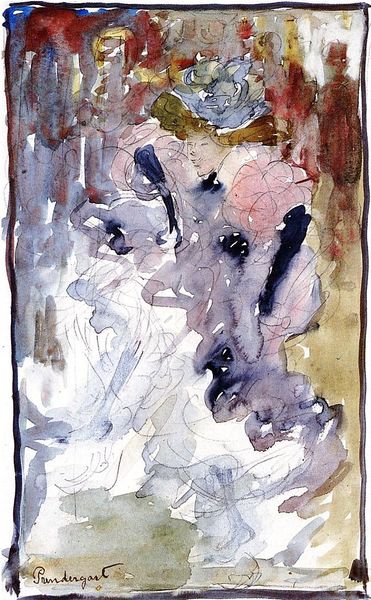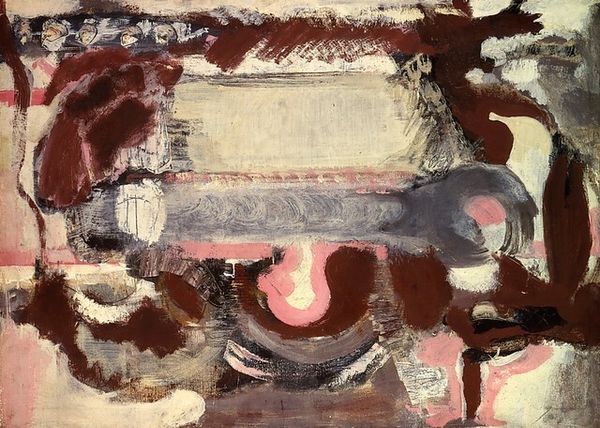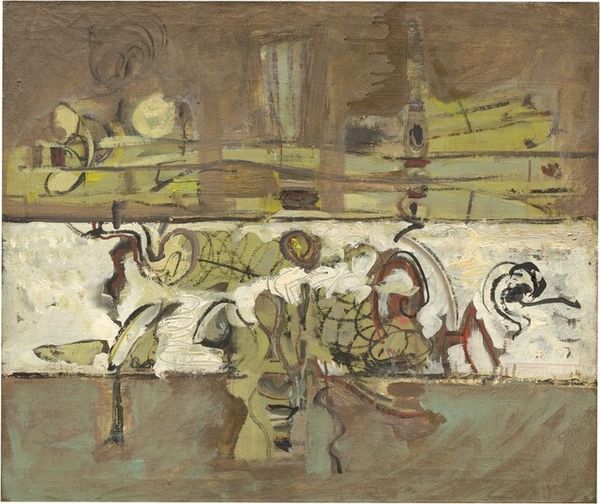
Copyright: Rijks Museum: Open Domain
Editor: This is Isaac Israels’ watercolor painting "Theatervoorstelling," placing us somewhere between 1875 and 1934. It’s currently at the Rijksmuseum. It feels like we're peering backstage, the brushstrokes loose and energetic. What’s your take on this glimpse behind the curtain? Curator: This watercolor offers a fascinating lens into the social fabric of the late 19th and early 20th-century theatre. The loose style reflects the impressionist movement’s focus on capturing fleeting moments. Think about how the stage offered not just entertainment, but also a space where societal norms were performed and often challenged. Israels doesn’t just show us the players; he hints at the industry, the labor, the costuming… What does the quick sketch technique suggest about Israels's perspective on these performers? Editor: Maybe it speaks to the transient nature of performance itself – a quick sketch for something that disappears each night. Curator: Precisely. It could also be a commentary on the rapidly changing social landscape. Art increasingly looked outside the halls of power to capture other truths. Genre painting democratized art by making the common life a legitimate subject. Note how this view might never be seen by audiences - Israels is showing the "back" of something on the stage "front." Does that placement, for you, enhance or detract from your view of theatrical performances? Editor: I never considered it from that direction; I typically think of these works depicting high society, of the plays "at their best." With all its frenetic energy it appears to capture some truth by being a seemingly unvarnished portrayal. Curator: Yes! Now think of the institutions that legitimized art – museums and galleries, for example. Where would genre paintings like this have found an audience, and how might that space influence our understanding of the painting? Editor: So the painting's social life extended beyond its subject, involving its exhibition as well? Interesting. It paints the piece in an entirely new light. Thanks!
Comments
No comments
Be the first to comment and join the conversation on the ultimate creative platform.
